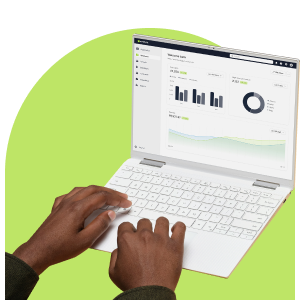We’ve long dismissed the slogan “email is dead”, and we stand firm in our stance, as the numbers show email continues to be a dominant medium for communication. Statista reports 241 million emails were sent every minute around the world as of December 2023, and it’s predicted 392.5 billion emails will be sent every day worldwide by 2026. Everlytic’s latest Email Marketing Benchmarks Report revealed our clients sent 5.5 billion bulk emails through our platform in 2022 – up from 4.6 billion sent in 2020. The crux is bulk email is an essential communication tool. This is why we’re giving you a bulk email crash course, which you’ll find handy whether you’re a newbie or old hand.
What’s All the Fuss About Bulk Email?
It’s challenging not to be glued to our inboxes, and yet email hasn’t been around for all that long. Just more than 30 years ago, South Africa’s first email was sent from Rhodes University in the Eastern Cape to Portland, Oregon in the United States. Fast-forward to present day, email plays an integral role in our lives. We can send emails to individual recipients or create bulk emails to get many eyeballs on our messaging – a terrific feat for marketers.
Let’s explain what we mean by bulk emails. These are essentially emails created for and sent to multiple recipients. They are used to market businesses; share announcements; build awareness for brands, products, and services; and, ultimately, boost sales and morale.
In best practice, bulk emails are created, sent, and tracked using a platform that has capabilities to personalise and automate messages at scale, store first-party data compliantly, and integrate with other platforms and systems – like customer relationship management. Everlytic is an example of a bulk email provider.
Using bulk email for marketing has proven to be a cost-effective and painless way to optimise your return on investment, and Everlytic’s latest benchmarks report showcases this.
Do Bulk Emails Really Make an Impact?
Email marketing is a highly competitive space, and it can be challenging to know whether your bulk email campaigns are making an impact and how they compare with your competitors.
This is why every two years since 2014, Everlytic analyses the billions of emails sent through its digital communication platform. The report is a game-changer for marketers and business owners, as it provides valuable insights into how their bulk email engagement compares to the averages in their industry as well as across the South African market.
The latest report revealed engagement was up, which is a positive sign for email marketing and showcases the impact bulk emails make. This time period is also interesting as it showed an uptake in email marketing after the Covid-19 pandemic.
Engagement was particularly high in the following industries: technology, business and consulting, and education and training.
Get your hands on our latest Email Marketing Benchmarks Report to see how your bulk emails compare with industry standards.
So, How Do You Measure Email Engagement?
The performance of bulk emails is measured by the engagement they receive. This is the extent to which recipients interact with emails by opening them and clicking on calls to action. For this, you need to use a platform, like Everlytic, with functionality to track how many opens and clicks your emails receive.
You can then calculate engagement rates to help you compare how your bulk emails are tracking. These are measured as follows:
- Open Rate: The percentage of contacts who opened a particular email out of the total number of contacts to whom you sent the email.
- Click-Through Rate: The percentage of people who clicked at least one link in a particular email out of the total number of people to whom the email was delivered.
- Click-to-Open Rate: The percentage of contacts who clicked on at least one link in the email divided by the number of contacts who opened the email.
What It Takes to Create Engaging Bulk Emails
Inboxes can get crowded, so it’s essential you hook your recipients from the moment they see your email and hold their attention until your final call to action. If you consider your own email consumption habits, you’ll know this is no easy feat.
Best practice elements for bulk email include:
- A subject line and preview text
- Logo and social sharing icons
- Header image
- Greeting and body text
- CTA buttons
- Unsubscribe link in the footer
Use an inverted pyramid layout and F-pattern design to guide reader attention.
Use behavioural linguistics to drive action, focusing on:
- Words & language themes: Pronouns like “you”, adjectives like “now”.
- Sentence structure: Short, urgent subject lines perform better.
- Poetic devices: Rhymes and patterns of three aid credibility.
- Imagery and design: High-quality visuals and effective CTA buttons.
- Decision triggers: Price positioning, timing of emails, and urgency cues.
The Feast Framework can help:
Fun, Easy, Attractive, Social, Timely
We’ve conducted four behavioural linguistic analyses of the emails sent through Everlytic’s platform across four industries. Check out our Education, Travel, Retail, and Financial Services reports.
Support at Every Step of Your Email Journey
We understand that building, sending, and tracking your bulk email campaigns can be intimidating – even if you’re experienced. This is why Everlytic has a team of Client Relationship Managers who can guide you to create and send effective campaigns that deliver top results – and they’ll help you track those results.
These team members are highly skilled at using the Everlytic platform and can help you make use of all the features. They also host regular client training sessions, ranging from basic to advanced.
Proven Tactics to Enhance Your Bulk Emails
Bulk emails are a way to build trust, encourage engagement, and, ultimately, boost sales. It’s possible – and important – to constantly track the performance of your emails to ensure your recipients are engaging with your messaging. It’s also necessary to thoughtfully craft every element of your emails – from your subject line to your final call to action – using persuasive language patterns that encourage your recipients to make decisions.
Harness the Power of Bulk Emails
Bulk emails can give your marketing a boost, but it makes all the difference when you have a reliable platform and support team to assist you.



